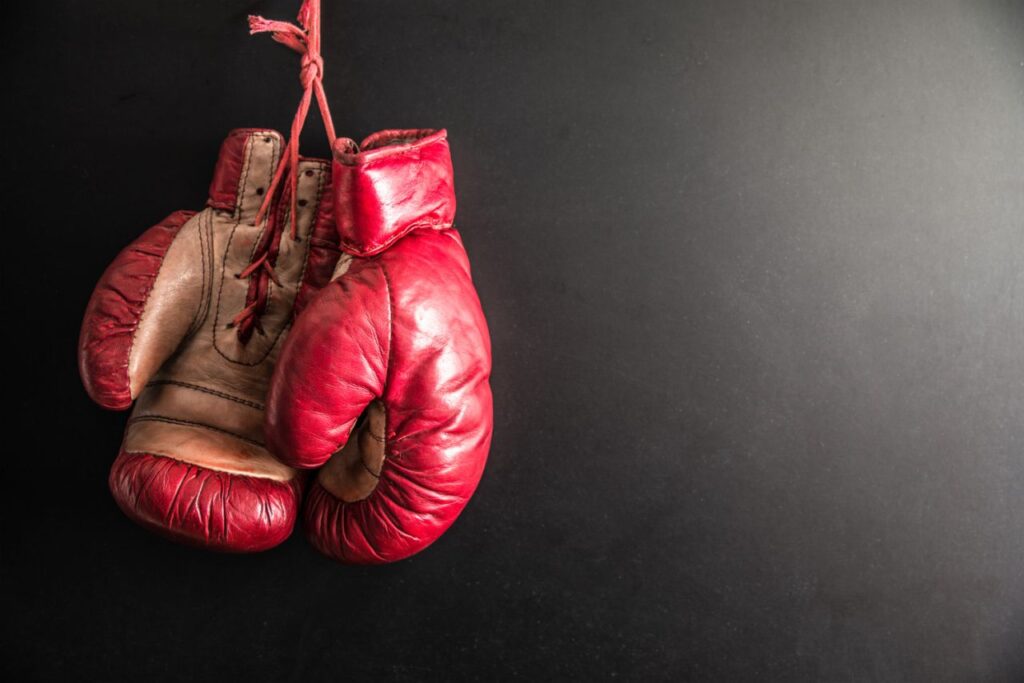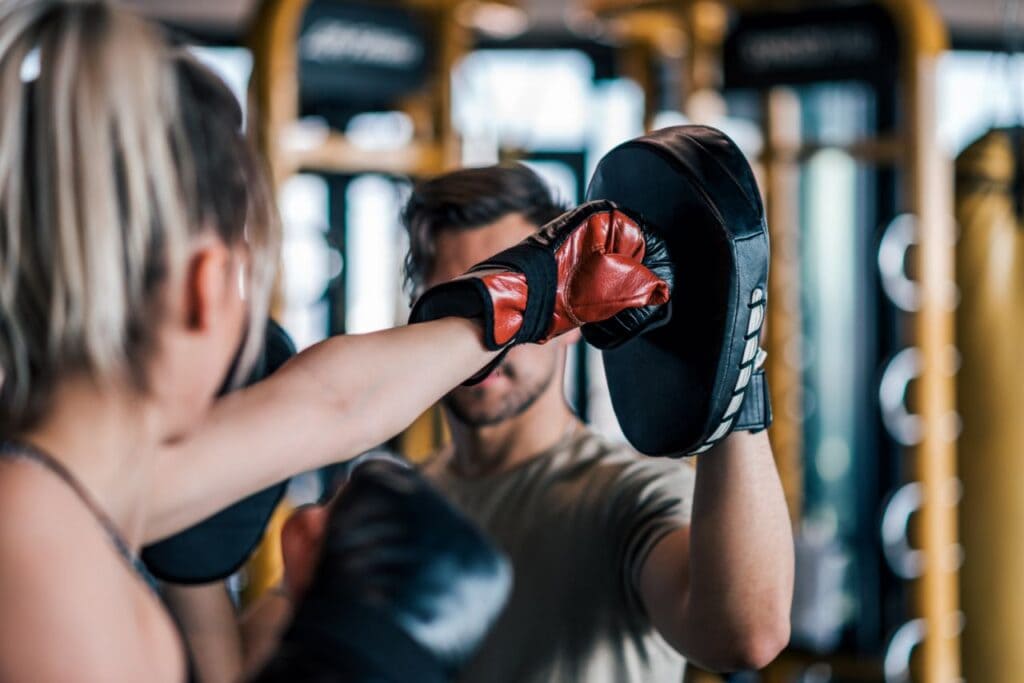Being a good boxer is not just about throwing hard punches. No matter how aggressive the professional boxers might seem in the ring, they always consider what measures they could take to prevent injuries during boxing or even during their training sessions.
The majority of the boxing coaches train their boxers’ effective techniques for preventing injuries. Landing your fighting combinations or hitting your opponent with punches isn’t the only aspect of boxing,
Many common boxing injuries are recognized by those who follow boxing programs and matches. That list of injuries includes concussions, brain injuries, facial bone fractures, cuts, hematomas, eye injuries, hand injuries, sprains, and strains.
The primary objective in boxing is to render blows to the head and body of the opponent to cause them to be incapacitated and unable to continue the fight. As a result, both participants are likely to receive injuries that can range from mild to potentially serious at the end of a twelve round fight.
The long-term impact of more serious boxing injuries remains under review, some of which may be permanent.
Therefore, prevention is essential and can be prioritized using proper equipment and oversight from experienced trainers, referees and medical staff.
Many boxing injuries can be prevented with proper training and protection techniques. This is why professional and trained boxers typically suffer fewer injuries. Many of these injuries should because to see a medical professional, particularly if a concussion or fracture is suspected.
Tips On How To Prevent Injuries In Boxing
Boxing is a rough sport. It’s extremely demanding on the body and, very often, will leave you with more than just a scrape or a scratch. While most injuries take place in the ring, many injuries occur at the gym while training as well.
It is crucial to avoid injury at all costs. Boxing training is meant to be the incredibly safe and low impact if done correctly. However, injuries, especially ones to the head, can have many negative impacts on the body, so all necessary precautions must be taken to avoid being injured.
In short, if you’re in this sport, you’re bound to sustain injuries at some point in time. But prevention goes a long way.
Here are some tips that will reduce your chances of injury during the fights and while training.
Protect your head
For a boxer, the opponent’s head is often the prime target. Most knockouts are caused due to blows to the head. It is often seen that many boxers suffer from long-term ailments due to head injuries. The great Muhammad Ali was one of them.
The boxing champion had reportedly taken 29,000 blows to the head throughout his career.
Head injuries are critical and can lead to concussions, short-term memory loss, and other neurological problems.
Therefore, extra effort must be taken to protect your head as much as possible. Wearing your protective headgear should become second nature, and you should never — and we mean, never — fight or even train without one.
Wear The Proper Protective Gear
During sparring, you should always wear the proper protective gear, even if it’s just light sparring, because it’s easy to sustain injuries such as cuts within the mouth. Here are some precautions that must follow while using protective gear.
- Head Guard: Make sure that your head guard is properly cushioned, feels comfortable, easily breathable and easy to see out of.
- Boxing Gloves for Sparring: If you’re below 147lbs, you and your sparring partner’s gloves should be at least 14 ounces. If you weigh more, you should opt for at least 16 ounces. Sparring gloves have extra padding compared to training gloves, so ensure that you have the right type. You can find the 10 best-rated boxing gloves here.
- Boxing Gloves for Training: You may want to get a separate pair of gloves for the heavy bag and other types of bag work. You’ll often be hitting hard and frequent on the bags, which require more protection, so bigger gloves are recommended.
- Groin Guard: For obvious reasons, get a bigger groin guard with more padding, and that’s comfortable.
- Mouth Guard: This is a must for sparring. You should never enter the ring without a custom-fitted mouthguard. Cheap ones usually don’t give you the proper mould, so get one that has a good reputation and name behind it. Top only is fine, but there’s also an option to have top and bottom if you prefer.
- Hand Wraps: These also are a must, no matter if you’re sparring or just doing bag work. Ensure that they’re 180in so that they’re long enough to properly wrap around your hands to give proper protection to your hands. Preferably, it would help if you went for a semi-elastic type. You can find the 5 best boxing hand wraps here.
Never skip stretching
Stretching exercises lengthen your ligaments and muscles, increasing your range of movement. As boxers are susceptible to muscle injuries, stretching exercises make you less vulnerable to muscle strains and sprains.
It would help if you focused on stretching exercises for your hamstring, shoulders, and quadriceps. Warm-up exercises are equally important and should never be skipped before sparring.
Ensure Your Hands Are Wrapped Properly
Always use the proper hand-wrapping technique.
Many videos on the Internet show various techniques to properly wrap your hands. Whatever method you choose, ensure adequate padding on your knuckles and wrist.
Always start wrapping with your hand stretched out fully, so when to make a fist, it tightens up, but make sure that you don’t wrap it too tight otherwise, it’ll reduce blood flow and be extremely uncomfortable.
Master Proper Punching Techniques
Every boxer knows that their hands are not just the most precious assets but also at most risk of injury. To reduce the possibility of damaging your wrists and fingers, it is important to learn how to punch correctly. Poor punching techniques won’t just cost you a win but also cause significant trauma to your hand and wrist.
Improve Your Fitness Level

Defending yourself from blows is essential to minimizing injuries. In addition, you must have excellent stamina and endurance to withstand intense training procedures.
If you have a high level of physical conditioning, you will be able to go through the bouts with a clear head and defend yourself by maintaining quick footwork and agile reflexes.
If you’re tired, it isn’t easy to move around, but remember to keep your guard up at all times.
Following A Highly Nutritious Diet
Athletes must stick to a diet full of proteins, vitamins, carbohydrates, and good fats. After training, the body gets sore and can only be recovered with an effective diet.
When you follow an effective diet, it helps reduce the risk of fracture and help heal bones faster. Also, make a routine to drink plenty of fluids every day so that your body stays hydrated.
If your body suffers from dehydration, you will feel fatigued, and eventually, it will result in more chances for injury. The most common problem due to dehydration is concussions.
Keep A Jar Of Petroleum Jelly Handy
Petroleum jelly is a boxer’s best friend. While watching a boxing match, you must have noticed the trainers applying petroleum jelly on the face of the boxer in between rounds.
The sole reason for applying petroleum jelly is to ensure that the opponent’s punches slide off your face without causing serious harm, thus, reducing the risk of facial injury.
Use Moisturizers To Prevent Nose Bleeds
When the skin inside the nose is dry and brittle, it is more susceptible to cuts and lacerations. Steam inhalations, saline water nose drops, and natural moisturizing nose sprays such as Aloe Vera nose sprays can effectively test the skin inside the nose.
By moisturizing the skin inside your nose before sparring, you can make yourself less vulnerable to nosebleeds.
Using Ointments On The Skin
Different ointments are used to treat bruises and cuts on the skin during the fight or after the fight ends. They are extremely important. If not treated properly at the time of impact, they can worsen.
Petroleum jelly, Adrenalin, Vitamin-E creams are some good options if you have a cut or bruise and you want immediate first aid for it. Giving timely first aid to cuts can reduce getting a bad skin injury.
Make sure that before applying any ointment on the cut, you wipe it off with an alcohol swab so the wound is cleaned from any germs and debris.
Hydration
Hydration is a crucial part of not only staying healthy but can also help to prevent injury. Dehydration causes fatigue and ultimately delays the delivery of nutrients to recovering tissue.
Not only will this negatively impact a fighter’s performance, but it can also lead to injury, tears, and strains in the body. Staying hydrated will prevent cramping, keep the body alert, and actively transport nutrients throughout the body.
Let your body rest
It’s fine to train hard and push yourself to the limit, but if you feel any sharp pains anywhere during training, then stop to find out what the problem is.
It may be a serious injury or could lead to one if you’re not careful. Let it heal before resuming your training.
Use Common Sense
Many injuries can be prevented with care to safety measures, using common sense and listening to your body. Chronic boxing injuries are caused by a failure to identify and treat an injury initially.
Pay attention to your body and seek medical attention before a problem becomes too big.
Common Boxing Injuries & How To Prevent Them
Boxing is one of the many contact sports that gets a bad name when it comes to boxing injuries a lot of the time.
However, it generally gets mixed reviews, with some people thinking it’s all punching and head injuries and some people (rightly so) saying it’s one of the best ways to keep fit and healthy.
Facial Lacerations
These might not occur during training or sparring sessions but are common during professional fights.
How can you prevent facial lacerations in boxing?
Wearing proper headgear can prevent or reduce the severity of facial injuries. In your training regimen, schedule adequate rest. Sleeping fewer than 8 hours per night is shown to increase injury risk by up to 70% (Active and Safe).
If you aren’t adequately rested, you won’t be adequately prepared to react and defend yourself against an opponent, increasing your risk of injury.
Boxers also apply Vaseline or petroleum jelly to their faces and any areas susceptible to blows before fights to make the skin more elastic, slippery, and less likely to tear.
This can also help slow bleeding if an injury does occur.
Shoulder dislocation
This might be caused due to a heavy impact on the body, missing out on warm-up before a sparring session, or even due to improper movement of arms while throwing punches.
On your own, you can also incorporate rotator cuff and scapular strengthening exercises in your training regimen. Having strong shoulder muscles can make all the difference in preventing shoulder injuries.
How can you prevent shoulder injuries in boxing?
Punching with the correct form is critical. It’s essential to learn proper boxing techniques when boxing at home, especially when you are just starting.
Carpal Bossing
Carpal bossing appears in the shape of a lump on the back of the hand where the bones in your fingers and wrist meet. It occurs due to punching incessantly over an extended period. It can be very painful, impeding your boxing ability in future.
How to prevent carpal bossing in boxing?
Ensure that you wear gloves with extra padding during sparring and weigh around 16 ounces. It would help if you also revisited your wrapping technique, ensuring that you aren’t wrapping around your knuckles too tightly or too loosely.
You should also apply an ice pack to your hand if it becomes inflamed or begins to ache.
Wrist, Hand, And Finger Injuries In Boxing
Hand injuries are the second most common type of injury in boxing for amateurs and professionals alike. Individuals boxing at home may be at high risk for these injuries due to improper technique, form, and equipment.
In competition and when practising at home on the heavy bag, missed strikes can lead to strains in the hand or wrist.
Repetitive punching or striking can cause stress fractures, and incorrect form only increases the likelihood of injury.
How can you prevent wrist, hand, and finger injuries in boxing?
Use proper equipment to prevent injuries to the wrists, hands, and fingers during boxing training. Boxing hand wraps and gloves will offer your hands and wrists padding and protection, whether you’re hitting the heavy bag or going up against an opponent in the ring.
When training, take the time to learn the correct punching form and technique: for example, when landing a punch, allow the first two knuckles to lead and avoid twisting through the wrist.
Finally, listen to your body: ease back on your boxing training if you feel any new or sharp pain in the hand or wrist.
Why Is Injury Prevention Important?

No one likes being injured. For starters, injuries hurt, and it’s not fun going about your day to day with the pain and physical limitations of an injury. Athletes suffer immensely when they obtain an injury because their injury takes them away from their passion and, in some cases, their job too.
But why is injury prevention important?
- Injury prevention keeps you healthy– the most important reason to make injury prevention a priority is to keep you healthy. Serious injuries can be life-altering. Even minor injuries can take a mental and physical toll on our health.
- It keeps you on track – whether your goals are to compete professionally or keep fit, avoiding injuries helps you stay on track. Injuries take time to heal and can slow you down or stop you from reaching your goals.
Not all injuries are preventable or foreseeable. But it would help if you did everything you could to prevent injuries before they happen. Take your safety and the safety of others seriously while training.
Always listen to your coach and wear the protective equipment suggested or required for your sport. You might not stop all injuries from happening, but you can help reduce severity and frequency when you follow directions and play by the rules.
What to do immediately after getting an injury?
As discussed before, boxing is a rough and rigorous sport, so you will probably face injuries while sparring. Therefore, you must know how to deal with such injuries to minimize the impact immediately.
Getting to Know the Symptoms
First of all, get to know how you feel. If you feel inflammation in muscles, then they might be damaged. If there is a tear or pop in the joints and pain when moving it, the joint would be twisted.
Swelling and cramping of muscles are symptoms of strain. You may also feel muscle weakness, causing the inability of a muscle to function properly.
If you feel low on energy and have dizziness in the head, it is a sign of dehydration and not following a nutritious diet.
When you can effectively diagnose symptoms of a problem, then it would be easier for you to follow a treatment for it. So, recognizing what your body is trying to tell you is the first step in treating an injury.
FAQs
What Are The Safety Precautions In Boxing?
In the gym, boxers are required to wear protective bandages for handwork, and during sparring, all boxers must wear boxing gloves, protective headgear and a gum shield. In addition, all sparring matches are closely monitored and refereed to ensure a safe and fair fight.
Do Boxers Have Concussions After Every Fight?
Boxers are at risk for sequelae of traumatic brain injury (TBI) due to repeated blows to the head. Still, amateur boxers may be at a 13% chance of concussion every time they enter the ring for competition.
What Causes A Boxer To Get Knocked Out?
Retrospective analysis of boxing knockouts has revealed that they typically are caused by a hook to the side of the jaw, which causes a rotation of the head in the horizontal plane. Uppercuts to the chin may also cause unconsciousness, while straight punches to the face are unlikely to do so
Do All Boxers Have CTE(Chronic Traumatic Encephalopathy)?
Both amateur and professional boxers are potentially at risk of developing CTE. However, no current epidemiological evidence exists to determine the prevalence of this condition in modern-day boxing, despite 17% of professional boxers in Britain with careers in the 1930-50s having clinical evidence of CTE.
What Is The Most Common Injury In Boxing?
The most common acute injuries among boxers are concussions, cuts and blows to the face, and injuries to the hands, fingers and wrists. There can also be muscular injuries from direct blows or from pulling muscles. Ankle sprains and dislocated shoulders are not uncommon.
- Find a gym. Boxing gyms aren't typically found in the yellow pages, but there are resources on the internet that can lead you in the right direction. ...
- Be sure the gym is within striking distance. ...
- Be open-minded. ...
- Choose your coach carefully. ...
- Do judge the gym by its cover.
So, can boxing be self-taught? Boxing can be self-taught but it's not the quickest and most effective way to become better at the sport because you aren't able to tap into the knowledge of a boxing coach who would be able to help you one to one.
Best Age to Start
Specialists in sports medicine believe that boxing classes are better to start from 9-10 years. Starting too early could result in putting the student off, as boxing is hard work and not always as fun as team sports, such as football or rugby.

